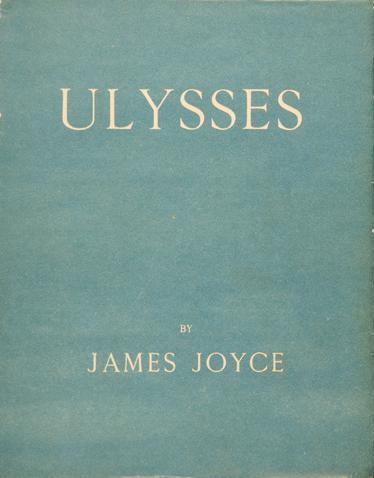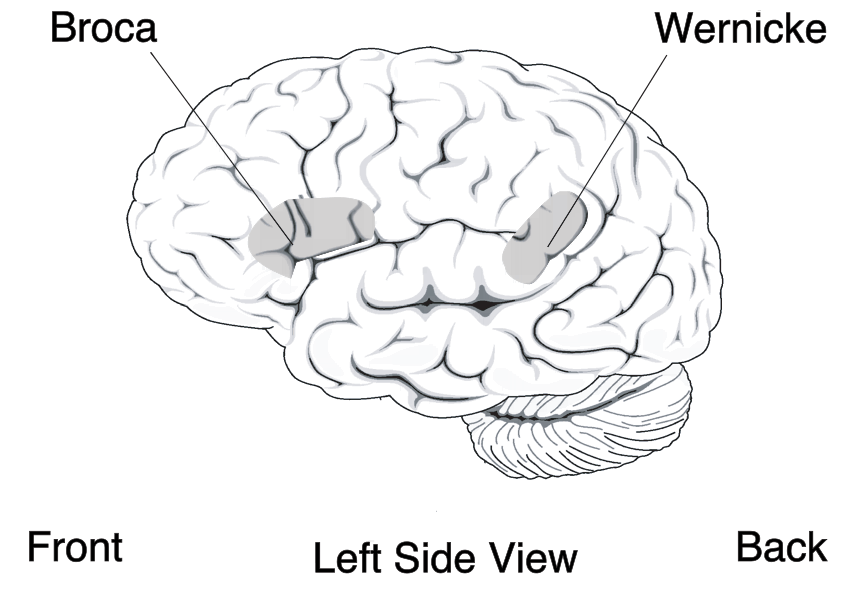|
Textuality
In literary theory, textuality comprises all of the attributes that distinguish the communicative content under analysis as an object of study. It is associated with structuralism and post-structuralism. Explanation Textuality is not just about the written word; it also comprises the placement of the words and the reader’s interpretation. There is not a set formula to describe a text’s textuality; it is not a simple procedure. This summary is true even though the interpretation that a reader develops from that text may decide the identity and the definitive meanings of that text. Textuality, as a literary theory, is that which constitutes a text in a particular way. The text is an undecidable (there is an inexistence of an effective or "strict" method of writing or structure). Aspects Being textual includes innumerable elements and aspects. Each and every form of text and text in that form of literature embraces and consists of its own individual and personal characteristi ... [...More Info...] [...Related Items...] OR: [Wikipedia] [Google] [Baidu] |
Intertextuality
Intertextuality is the shaping of a text's meaning by another text, either through deliberate Composition (language), compositional strategies such as quotation, allusion, calque, plagiarism, translation, pastiche or parody,Gerard Genette (1997) ''Paratexts'p.18/ref>Hallo, William W. (2010) ''The World's Oldest Literature: Studies in Sumerian Belles-Lettres'p.608/ref>Cancogni, Annapaola (1985''The Mirage in the Mirror: Nabokov's Ada and Its French Pre-Texts''pp.203-213 or by interconnections between similar or related works perceived by an audience or reader of the text. These references are sometimes made deliberately and depend on a reader's prior knowledge and understanding of the referent, but the effect of intertextuality is not always intentional and is sometimes inadvertent. Often associated with strategies employed by writers working in imaginative registers (fiction, poetry, and drama and even non-written texts like performance art and digital media), intertextuality is n ... [...More Info...] [...Related Items...] OR: [Wikipedia] [Google] [Baidu] |
Hypertextuality
Hypertext is text displayed on a computer display or other electronic devices with references ( hyperlinks) to other text that the reader can immediately access. Hypertext documents are interconnected by hyperlinks, which are typically activated by a mouse click, keypress set, or screen touch. Apart from text, the term "hypertext" is also sometimes used to describe tables, images, and other presentational content formats with integrated hyperlinks. Hypertext is one of the key underlying concepts of the World Wide Web, where Web pages are often written in the Hypertext Markup Language (HTML). As implemented on the Web, hypertext enables the easy-to-use publication of information over the Internet. Etymology The English prefix "hyper-" comes from the Greek prefix "ὑπερ-" and means "over" or "beyond"; it has a common origin with the prefix "super-" which comes from Latin. It signifies the overcoming of the previous linear constraints of written text. The te ... [...More Info...] [...Related Items...] OR: [Wikipedia] [Google] [Baidu] |
Jacques Derrida
Jacques Derrida (; ; born Jackie Élie Derrida; See also . 15 July 1930 – 9 October 2004) was an Algerian-born French philosopher. He developed the philosophy of deconstruction, which he utilized in numerous texts, and which was developed through close readings of the linguistics of Ferdinand de Saussure and Husserlian and Heideggerian phenomenology.Jacques Derrida . ''Encyclopædia Britannica''. Britannica.com. Retrieved 19 May 2017. He is one of the major figures associated with post-structuralism and [...More Info...] [...Related Items...] OR: [Wikipedia] [Google] [Baidu] |
Structuralism
In sociology, anthropology, archaeology, history, philosophy, and linguistics, structuralism is a general theory of culture and methodology that implies that elements of human culture must be understood by way of their relationship to a broader system. It works to uncover the structures that underlie all the things that humans do, think, perceive, and feel. Alternatively, as summarized by philosopher Simon Blackburn, structuralism is: Blackburn, Simon, ed. 2008. "Structuralism." In '' Oxford Dictionary of Philosophy'' (2nd rev. ed.). Oxford: Oxford University Press. . p. 353. e belief that phenomena of human life are not intelligible except through their interrelations. These relations constitute a structure, and behind local variations in the surface phenomena there are constant laws of abstract structure.Structuralism in Europe developed in the early 20th century, mainly in France and the Russian Empire, in the structural linguistics of Ferdinand de Saussure and the su ... [...More Info...] [...Related Items...] OR: [Wikipedia] [Google] [Baidu] |
Literary Criticism
Literary criticism (or literary studies) is the study, evaluation, and interpretation of literature. Modern literary criticism is often influenced by literary theory, which is the philosophical discussion of literature's goals and methods. Though the two activities are closely related, literary critics are not always, and have not always been, theorists. Whether or not literary criticism should be considered a separate field of inquiry from literary theory is a matter of some controversy. For example, the ''Johns Hopkins Guide to Literary Theory and Criticism'' draws no distinction between literary theory and literary criticism, and almost always uses the terms together to describe the same concept. Some critics consider literary criticism a practical application of literary theory, because criticism always deals directly with particular literary works, while theory may be more general or abstract. Literary criticism is often published in essay or book form. Academic literar ... [...More Info...] [...Related Items...] OR: [Wikipedia] [Google] [Baidu] |
Structuralism
In sociology, anthropology, archaeology, history, philosophy, and linguistics, structuralism is a general theory of culture and methodology that implies that elements of human culture must be understood by way of their relationship to a broader system. It works to uncover the structures that underlie all the things that humans do, think, perceive, and feel. Alternatively, as summarized by philosopher Simon Blackburn, structuralism is: Blackburn, Simon, ed. 2008. "Structuralism." In '' Oxford Dictionary of Philosophy'' (2nd rev. ed.). Oxford: Oxford University Press. . p. 353. e belief that phenomena of human life are not intelligible except through their interrelations. These relations constitute a structure, and behind local variations in the surface phenomena there are constant laws of abstract structure.Structuralism in Europe developed in the early 20th century, mainly in France and the Russian Empire, in the structural linguistics of Ferdinand de Saussure and the su ... [...More Info...] [...Related Items...] OR: [Wikipedia] [Google] [Baidu] |
Literary Theory
Literary theory is the systematic study of the nature of literature and of the methods for literary analysis. Culler 1997, p.1 Since the 19th century, literary scholarship includes literary theory and considerations of intellectual history, moral philosophy, social prophecy, and interdisciplinary themes relevant to how people interpret meaning. In the humanities in modern academia, the latter style of literary scholarship is an offshoot of post-structuralism. Searle, John. (1990)"The Storm Over the University" ''The New York Review of Books'', December 6, 1990. Consequently, the word ''theory'' became an umbrella term for scholarly approaches to reading texts, some of which are informed by strands of semiotics, cultural studies, philosophy of language, and continental philosophy. History The practice of literary theory became a profession in the 20th century, but it has historical roots that run as far back as ancient Greece (Aristotle's '' Poetics'' is an often cited early ... [...More Info...] [...Related Items...] OR: [Wikipedia] [Google] [Baidu] |
Intuitionism
In the philosophy of mathematics, intuitionism, or neointuitionism (opposed to preintuitionism), is an approach where mathematics is considered to be purely the result of the constructive mental activity of humans rather than the discovery of fundamental principles claimed to exist in an objective reality. That is, logic and mathematics are not considered analytic activities wherein deep properties of objective reality are revealed and applied, but are instead considered the application of internally consistent methods used to realize more complex mental constructs, regardless of their possible independent existence in an objective reality. Truth and proof The fundamental distinguishing characteristic of intuitionism is its interpretation of what it means for a mathematical statement to be true. In Brouwer's original intuitionism, the truth of a mathematical statement is a subjective claim: a mathematical statement corresponds to a mental construction, and a mathematician c ... [...More Info...] [...Related Items...] OR: [Wikipedia] [Google] [Baidu] |
Text (literary Theory)
In literary theory, a text is any object that can be "read", whether this object is a work of literature, a street sign, an arrangement of buildings on a city block, or styles of clothing. It is a coherent set of Sign (semiotics) , signs that transmits some kind of informative message. This set of signs is considered in terms of the informative message's ''content'', rather than in terms of its physical form or the medium in which it is represented. Within the field of literary criticism, "text" also refers to the original information content of a particular piece of writing; that is, the "text" of a work is that primal symbolic arrangement of letters as originally composed, apart from later alterations, deterioration, commentary, translations, paratext, etc. Therefore, when literary criticism is concerned with the determination of a "text", it is concerned with the distinguishing of the original information content from whatever has been added to or subtracted from that cont ... [...More Info...] [...Related Items...] OR: [Wikipedia] [Google] [Baidu] |
Electronic Publishing
Electronic publishing (also referred to as publishing, digital publishing, or online publishing) includes the digital publication of e-books, digital magazines, and the development of digital libraries and catalogues. It also includes the editing of books, journals, and magazines to be posted on a screen (computer, e-reader, tablet, or smartphone). About Electronic publishing has become common in scientific publishing where it has been argued that peer-reviewed scientific journals are in the process of being replaced by electronic publishing. It is also becoming common to distribute books, magazines, and newspapers to consumers through tablet reading devices, a market that is growing by millions each year, generated by online vendors such as Apple's iTunes bookstore, Amazon's bookstore for Kindle, and books in the Google Play Bookstore. Market research suggested that half of all magazine and newspaper circulation would be via digital delivery by the end of 2015 and that ha ... [...More Info...] [...Related Items...] OR: [Wikipedia] [Google] [Baidu] |
Printing
Printing is a process for mass reproducing text and images using a master form or template. The earliest non-paper products involving printing include cylinder seals and objects such as the Cyrus Cylinder and the Cylinders of Nabonidus. The earliest known form of printing as applied to paper was woodblock printing, which appeared in China before 220 AD for cloth printing. However, it would not be applied to paper until the seventh century.Shelagh Vainker in Anne Farrer (ed), "Caves of the Thousand Buddhas", 1990, British Museum publications, Later developments in printing technology include the movable type invented by Bi Sheng around 1040 AD and the printing press invented by Johannes Gutenberg in the 15th century. The technology of printing played a key role in the development of the Renaissance and the Scientific Revolution and laid the material basis for the modern knowledge-based economy and the spread of learning to the masses. History Woodblock printing Wood ... [...More Info...] [...Related Items...] OR: [Wikipedia] [Google] [Baidu] |
Speech
Speech is a human vocal communication using language. Each language uses phonetic combinations of vowel and consonant sounds that form the sound of its words (that is, all English words sound different from all French words, even if they are the same word, e.g., "role" or "hotel"), and using those words in their semantic character as words in the lexicon of a language according to the syntactic constraints that govern lexical words' function in a sentence. In speaking, speakers perform many different intentional speech acts, e.g., informing, declaring, asking, persuading, directing, and can use enunciation, intonation, degrees of loudness, tempo, and other non-representational or paralinguistic aspects of vocalization to convey meaning. In their speech, speakers also unintentionally communicate many aspects of their social position such as sex, age, place of origin (through accent), physical states (alertness and sleepiness, vigor or weakness, health or illness), psycholo ... [...More Info...] [...Related Items...] OR: [Wikipedia] [Google] [Baidu] |




